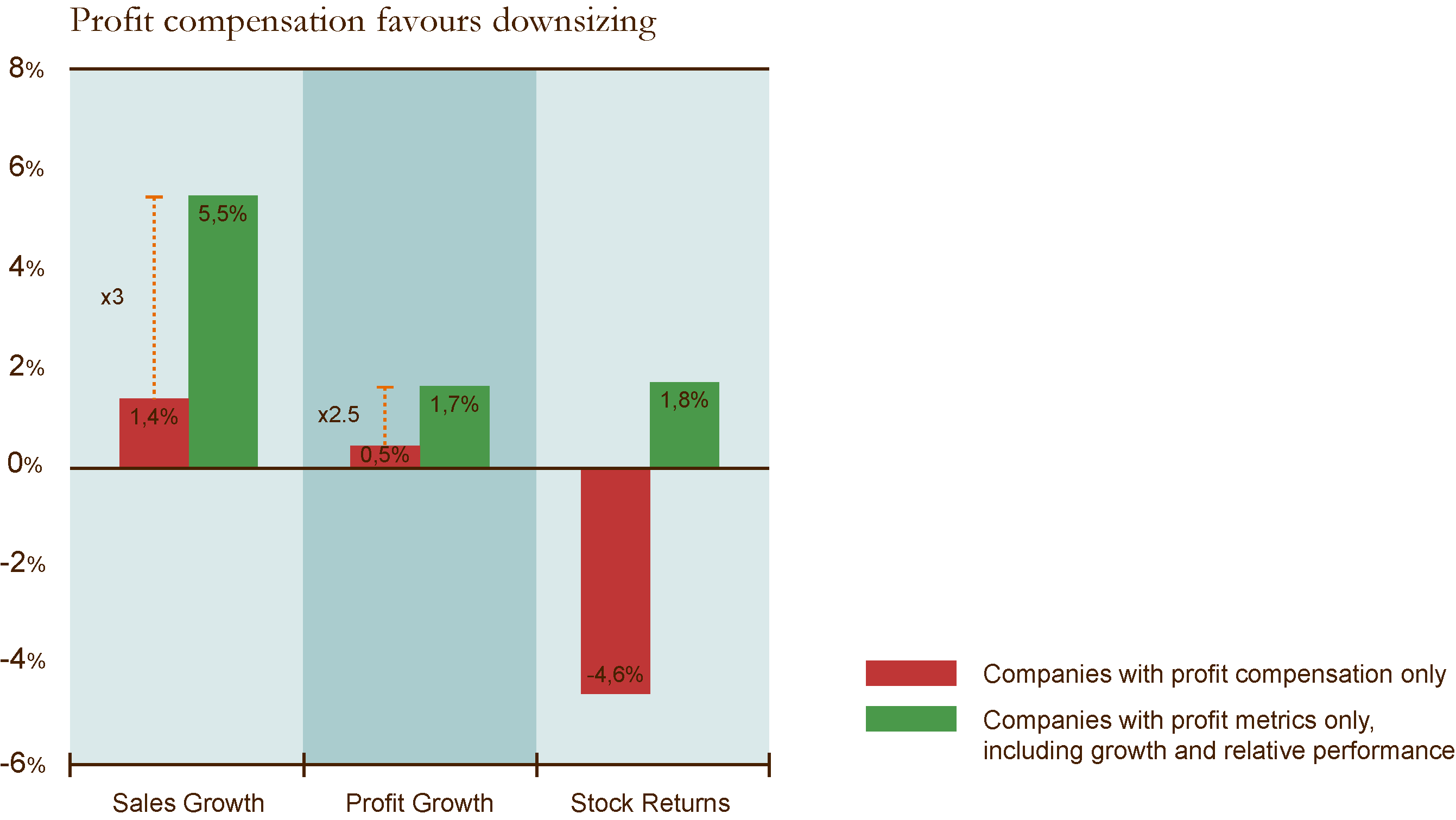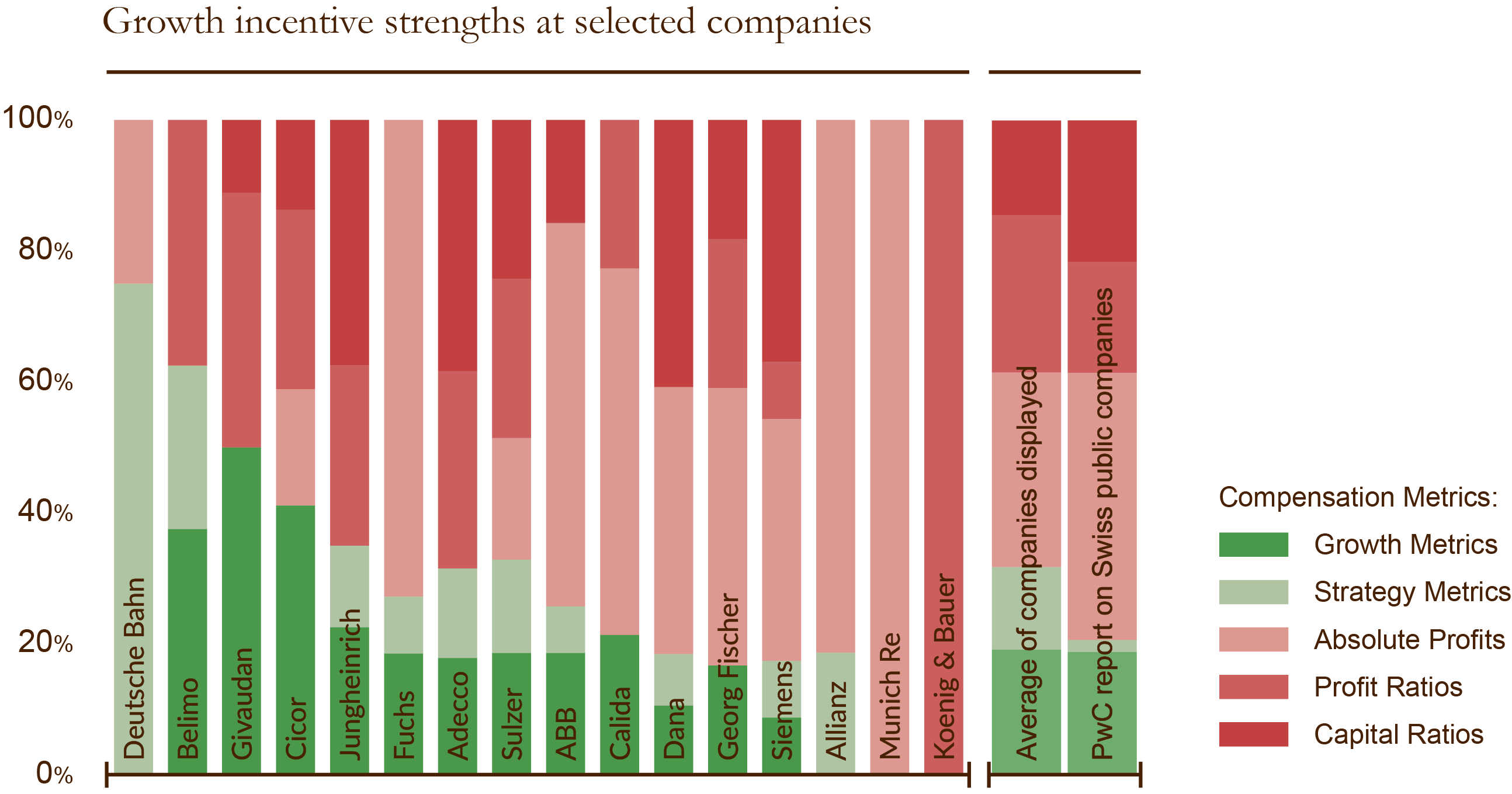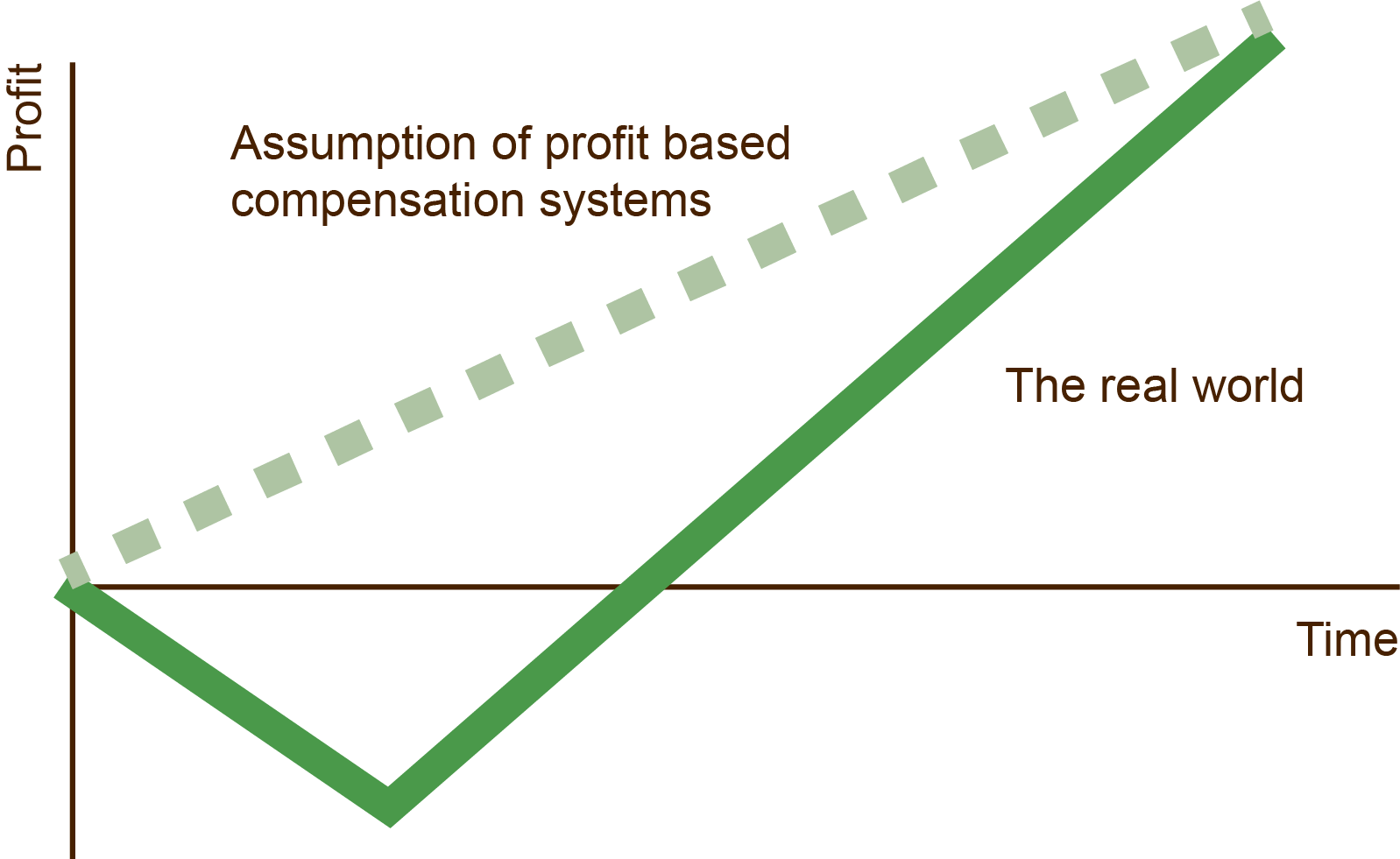June 19, 2025
The Profit Problem: Why Focusing on Profit in Executive Pay Leads to Underperformance
The article was generated from the video transcript and edited by Dr. Hermann J. Stern.
In the realm of executive compensation, the choice of performance metrics is paramount. It dictates what behaviors are incentivized and ultimately shapes the strategic direction of a company. In a previous analysis, we explored the pitfalls of relying solely on profit margins and capital return metrics. Now, we delve into empirical evidence that starkly illustrates the detrimental consequences of a narrow, profit-centric approach to executive pay compared to a more balanced scorecard incorporating growth and other vital indicators.
Obermatt's research, first conducted and published in the NZZamSonntag in 2015 (as detailed in the article Executive Compensation with a Downsizing Incentive), provides compelling evidence of this very point. We analyzed two groups of companies: those with a heavy reliance on profit-related metrics in their executive compensation plans (depicted in red in the accompanying graph from the article) and those employing a broader range of metrics, including growth indicators (represented in green) and other relevant measures.

The findings were unequivocal. In 2014, companies with an exclusive focus on profit metrics underperformed across the board. This wasn't limited to just revenue generation; these companies also exhibited lower overall profitability and delivered inferior shareholder returns compared to their counterparts with more diversified metric systems.
Despite this clear evidence, our subsequent analysis two years later revealed a concerning persistence of this flawed approach. A staggering 60% of Swiss companies still maintained an exclusive focus on profit in their executive compensation, with a mere 34% incorporating revenue metrics. This prompted a follow-up article in NZZamSonntag, directly highlighting the companies with these misaligned incentive programs. Encouragingly, this public scrutiny has had an impact, with the Swiss market showing a significant shift towards a broader mix of metrics, reaching 60% adoption within five years.
However, recent observations of companies where Obermatt has presented its services reveal that while growth metrics are increasingly included, their impact within compensation contracts remains limited.

As the graph illustrates, the weighting of growth incentives (green) often pales in comparison to the dominant influence of capital return metrics (dark red) and profit metrics (lighter red). On average, growth incentives constitute a mere 20% of the overall incentive structure, with the remaining majority still tied to profit-related measures. This conclusion is further corroborated by independent analysis from PwC, with whom Obermatt collaborates closely, confirming the continued dominance of profit in Swiss executive pay, despite the well-documented drawbacks.
The fundamental issue with an over-reliance on profit metrics lies in their inherent short-term focus and their failure to account for the dynamics of business growth and investment. As the classic "hockey stick" growth curve illustrates, new investments typically involve an initial period of negative cash flow as capital is deployed before revenue and profit generation kick in.

Linking executive pay solely to immediate profit creation effectively punishes executives for making necessary long-term investments. Why would a manager greenlight a project with an initial dip in profitability if their compensation is directly tied to those immediate returns? The incentive becomes to prioritize short-term gains and forgo initiatives that promise significant value creation in the future. The assumption that profit will materialize immediately upon investment, represented by the unrealistic dotted line on the hockey stick graph, simply doesn't align with business reality.
This short video, coupled with the empirical evidence highlighted in the Obermatt research, vividly illustrates the critical flaw in narrowly focusing on profit metrics for executive pay. Witness the data that demonstrates the underperformance of companies with this myopic approach and understand why incentivizing for the "immediate dotted line" can stifle the very investments needed for sustainable, long-term success. Play in the video above to see the explanation and reconsider the next time you encounter executive compensation plans heavily weighted towards short-term profit targets.